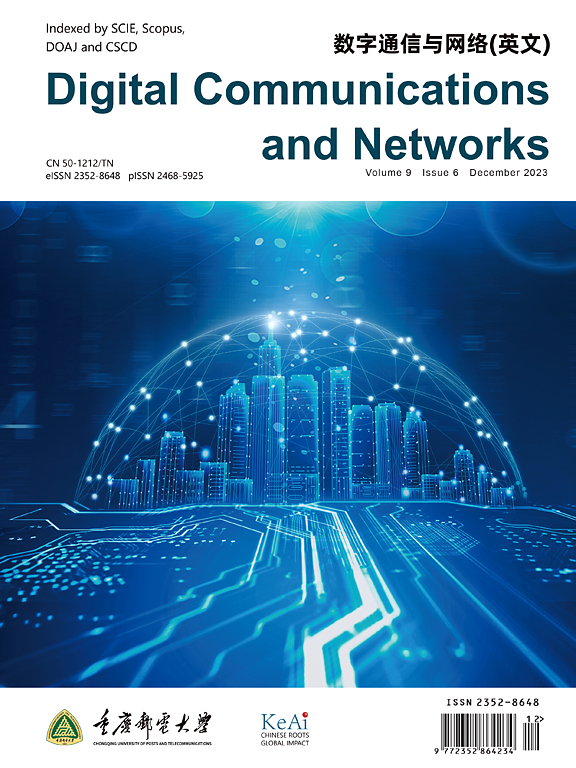From sensing to energy savings: A comprehensive survey on integrating emerging technologies for energy efficiency in WBANs
IF 7.5
2区 计算机科学
Q1 TELECOMMUNICATIONS
引用次数: 0
Abstract
Energy is essential for human existence, and its high consumption is a growing concern in today's technology-driven society. Global initiatives aim to reduce energy consumption and pollution by developing and deploying energy-efficient sensing technologies for long-term monitoring, control, automation, security, and interactions. Wireless Body Area Networks (WBANs) benefit a lot from the continuous monitoring capabilities of these sensing devices, which include medical sensors worn on or implanted in the human body for healthcare monitoring. Despite significant advancements, achieving energy efficiency in WBANs remains a significant challenge. A deep understanding of the WBAN architecture is essential to identify the causes of its energy inefficiency and develop novel energy-efficient solutions. We investigate energy efficiency issues specific to WBANs. We discuss the transformative impact that artificial intelligence and Machine Learning (ML) can have on achieving the energy efficiency of WBANs. Additionally, we explore the potential of emerging technologies such as quantum computing, nano-technology, biocompatible energy harvesting, and Simultaneous Wireless Information and Power Transfer (SWIPT) in enabling energy efficiency in WBANs. We focus on WBANs' architecture, hardware, and software components to identify key factors responsible for energy consumption in the WBAN environment. Based on our comprehensive review, we introduce an innovative, energy-efficient three-tier architecture for WBANs that employs ML and edge computing to overcome the limitations inherent in existing energy-efficient solutions. Finally, we summarize the lessons learned and highlight future research directions that will enable the development of energy-efficient solutions for WBANs.
从传感到节能:综合调查整合新兴技术提高wban的能源效率
能源是人类生存的必需品,在当今技术驱动的社会中,能源的高消费日益引起人们的关注。全球倡议旨在通过开发和部署用于长期监测、控制、自动化、安全和互动的节能传感技术,减少能源消耗和污染。无线体域网络(wban)从这些传感设备的连续监测功能中受益匪浅,这些传感设备包括穿戴在人体上或植入人体以进行医疗监测的医疗传感器。尽管取得了重大进展,但实现wban的能源效率仍然是一项重大挑战。深入了解WBAN架构对于确定其能源效率低下的原因和开发新的节能解决方案至关重要。我们调查了wban特有的能源效率问题。我们讨论了人工智能和机器学习(ML)对实现wban能源效率的变革性影响。此外,我们还探索了新兴技术的潜力,如量子计算、纳米技术、生物相容性能量收集和同步无线信息和电力传输(SWIPT)在实现wban能源效率方面的潜力。我们关注WBAN的架构、硬件和软件组件,以确定在WBAN环境中负责能源消耗的关键因素。基于我们的全面审查,我们为wban引入了一种创新的、节能的三层架构,该架构采用ML和边缘计算来克服现有节能解决方案固有的局限性。最后,我们总结了经验教训,并强调了未来的研究方向,这将使wban节能解决方案的发展成为可能。
本文章由计算机程序翻译,如有差异,请以英文原文为准。
求助全文
约1分钟内获得全文
求助全文
来源期刊

Digital Communications and Networks
Computer Science-Hardware and Architecture
CiteScore
12.80
自引率
5.10%
发文量
915
审稿时长
30 weeks
期刊介绍:
Digital Communications and Networks is a prestigious journal that emphasizes on communication systems and networks. We publish only top-notch original articles and authoritative reviews, which undergo rigorous peer-review. We are proud to announce that all our articles are fully Open Access and can be accessed on ScienceDirect. Our journal is recognized and indexed by eminent databases such as the Science Citation Index Expanded (SCIE) and Scopus.
In addition to regular articles, we may also consider exceptional conference papers that have been significantly expanded. Furthermore, we periodically release special issues that focus on specific aspects of the field.
In conclusion, Digital Communications and Networks is a leading journal that guarantees exceptional quality and accessibility for researchers and scholars in the field of communication systems and networks.
 求助内容:
求助内容: 应助结果提醒方式:
应助结果提醒方式:


